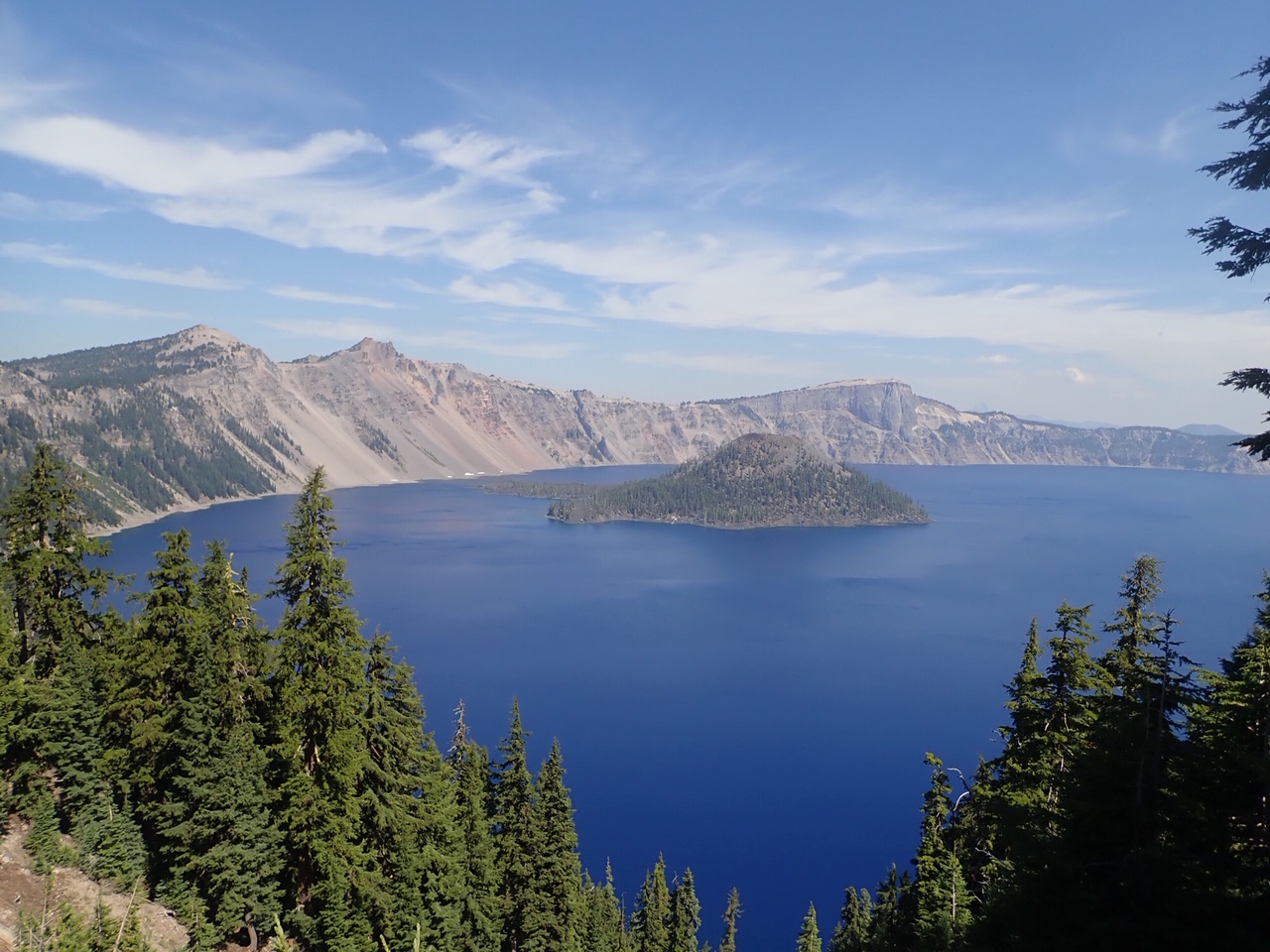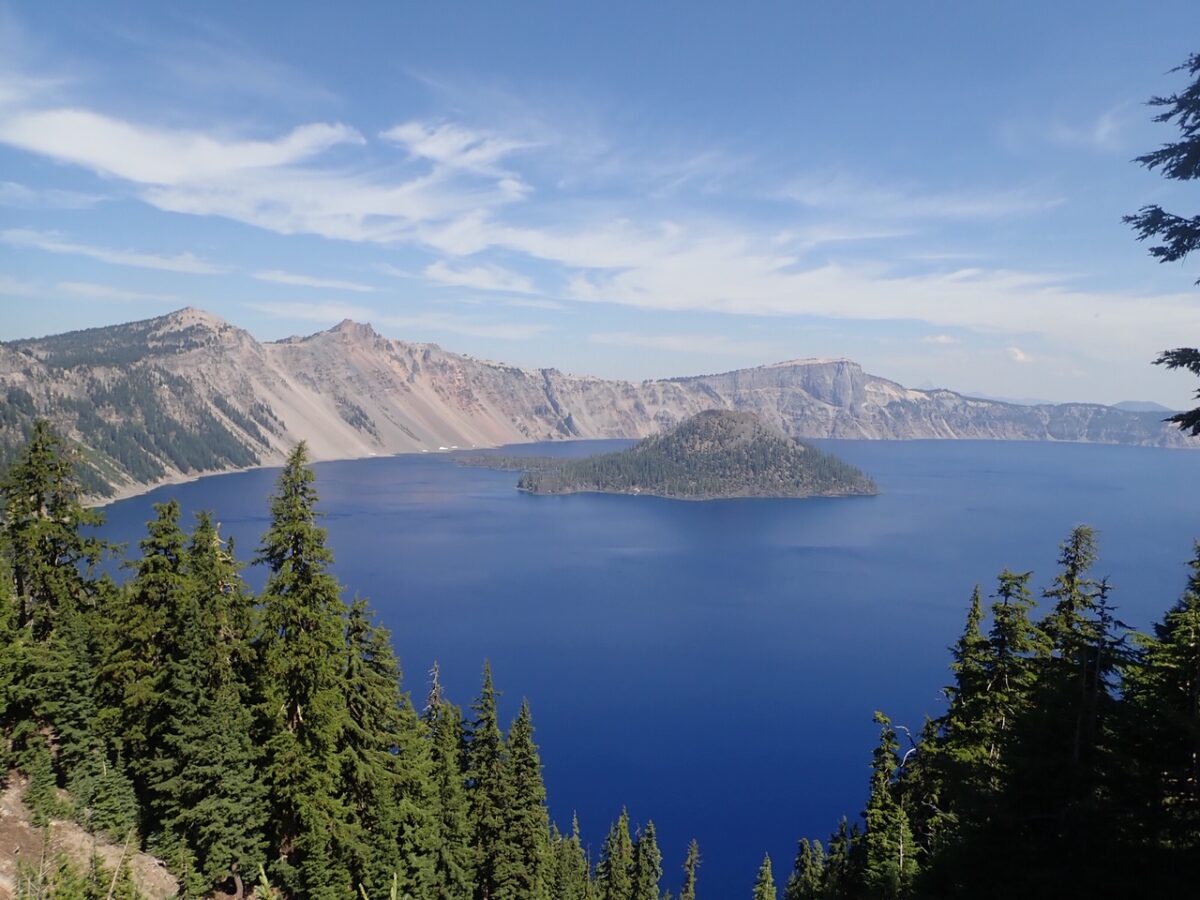Crater Lake National Park: America’s Deepest Lake
Wow! That’s about all you can say the first time you look down on the crystal blue waters of Crater Lake. It is absolutely gorgeous. The lake is so deep that it absorbs all of the colors of the sunlight, only reflecting back the blues and purples. Near the edge it also reflects a bit of green, making the water turquoise. It almost looks tropical.

The water is absolutely clear. They say it is some of the cleanest water in the world. The lake is 100% snow melt. No glaciers or rivers feed into it, just the 500+ inches of snow that falls there each year!
There is no development on the lake. In fact, there is only one trail that takes you down from the rim to the water’s edge. It is a 2.2 mile round trip hike down (and back up) 700 feet along steep switchbacks. The path is wide and easy walking, but the elevation gain makes it strenuous. Once you get to the bottom, you can’t go very far. There is some rocky shoreline and steep cliffs, keeping the lake pristine. We even saw someone drink right out of the lake!
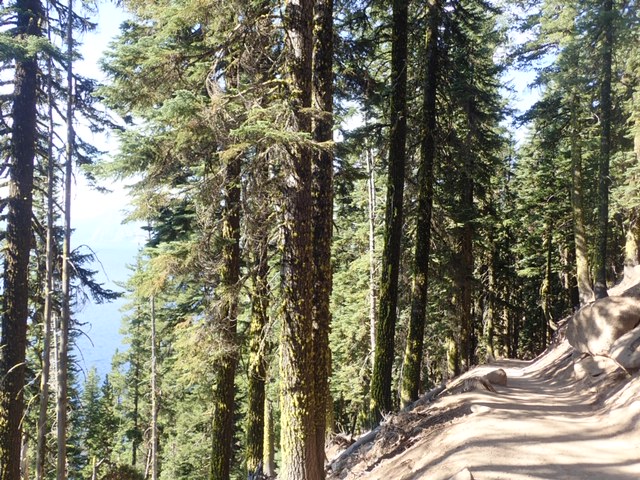
About Crater Lake National Park
Crater Lake National Park was founded in 1902 to protect the lake and 183,000+ acres of adjacent forests and volcanic features. Crater Lake is the deepest lake in the US and the ninth deepest lake in the world. It sits in the caldera of a collapsed volcano. Mount Mazama stood 12,000 feet before it erupted about 7700 years ago. Now the highest point of the rim is under 9,000 feet high and the elevation at lake level is just 6,173 feet.
Even though Crater Lake is actually in a caldera, stories say that the name “crater” actually came from the small island (now called Wizard Island) that sits in the lake. This island is a volcanic crater, so that may be the source of the name. Another small island is Phantom Ship; you can see this only from a few places on the rim and it looks like a tiny ship sailing on the lake. In fact, it is 14 stories high!

When To Visit Crater Lake National Park
Our first visit to Crater Lake National Park was in early July but the East Rim Drive was not yet open, due to snow. You can access Rim Village year round – they keep that plowed – but the north entrance and rim drive are only open seasonally, depending on the snowfall. They get over 42 feet (13 meters) of snow each year. That’s a lot of snow!!!
Late July or August are the best times to visit in order to be sure that everything is open, but that also means you’ll be there with all the crowds. Crater Lake National Park gets over 700,000 visitors each year; most in the summer months.
What To Do at Crater Lake National Park
Rim Drive
The main attraction is the 33 mile Rim Drive, with scenic overlooks that each give you a different perspective. The caldera is no perfectly round; there are steep cliffs and jagged ridges, some wooded and some barren rocky slopes. We especially liked “Devil’s Backbone” – a multi-colored rock face that goes right down to the water. Spectacular!
As you drive along Rim Drive, watch out for cyclists. It is a curvy road with steep drop offs, but it is a really popular bike ride. In fact, the park closes the rim drive to vehicles a couple times a year, leaving it open just for cyclists. That would be fun!
Lake Experience
Other than driving around the top, there is one place you can get down to the lake level. That’s the Cleetwood Cove trail. Bring along a fishing pole – no license is required and there is no limit. If you go early, you will be the only person fishing on the entire lake. That’s a neat feeling.
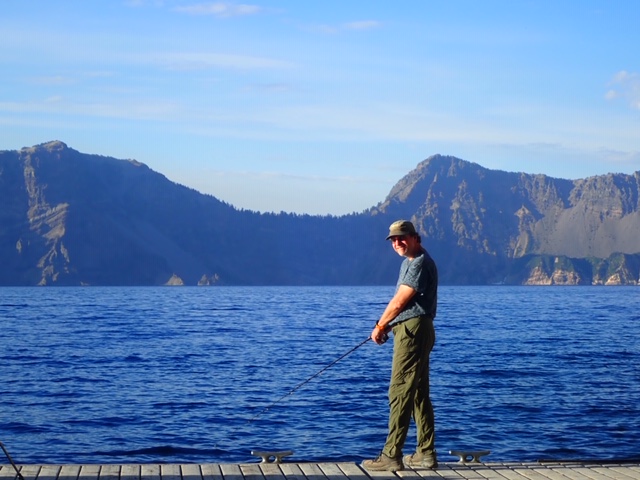
On a warm day you can swim in the lake, but it is cool. The average summer temperature is just 60 F. Most years there is a concessionaire that runs boat trips out of Cleetwood Cove over to Wizard Island. (Reservations Required)
Accommodations
While it is possible to see the lake and do the Rim Drive in a day, we do recommend that you stay at least one night to take in a sunset or a sunrise, or both!
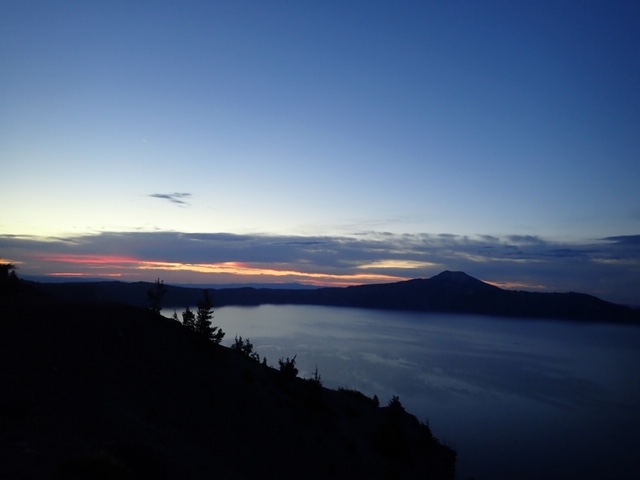
There is a National Park Lodge at Rim Village, as well as a campground and motor inn with cute cabins at Mazana (that’s 3 miles and 1100 feet below Rim Village). In the summer, you will want to have reservations.
Hiking
The lake is not the only reason to go to Crater Lake National Park. There are 90 miles of trails from easy walks along the rim, to strenuous hikes to the tops of mountains. A portion of the Pacific Crest Trail (PCT) runs through the park.
There are hikes for all abilities. Several short walks (1 mile or less) take you the viewpoints along the rim, to scenic waterfalls, wildflower gardens and to crazy rock formations like The Pinnacles.
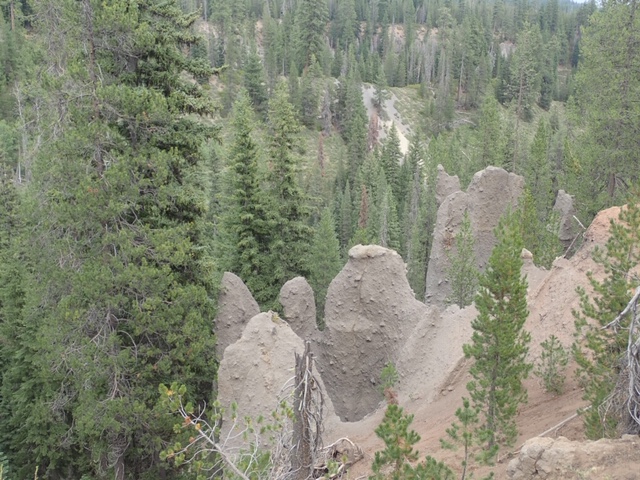
One really pretty walk was from the campground – the 1.7 mile Annie Creek Trail. It goes down into the canyon and along the creek. Classified as “moderate”, there is a 200 feet elevation gain, but it is lovely. Keep your eyes peeled for wildlife and be sure to pick up an interpretive guide so you can learn more about the creek and the area.
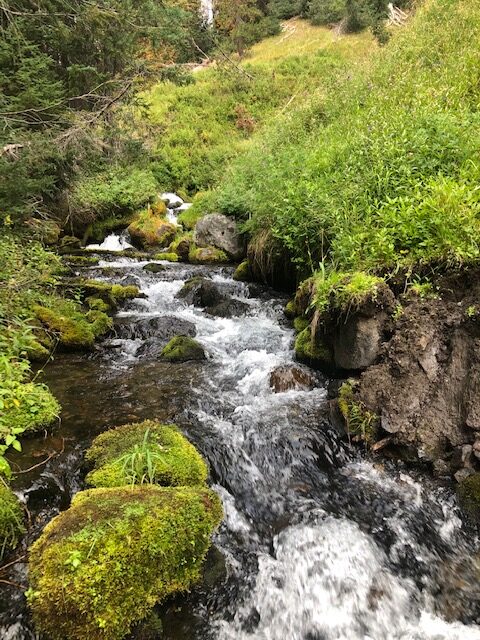
We were fortunate to be able to stay several days in the park and experience most of the trails. It was great that most of the trails were open and free of snow, so we were able to do a few of the higher elevation trails.
- Garfield Peak – This 3.6 mile round trip hike starts at the Crater Lake Lodge in Rim Village and goes up 1000 feet to the top of Garfield Peak. It is not easy, or for the faint of heart. You walk right on the ridge. But from the top you have panoramic views – 360 degrees – and look down at the phantom ship.
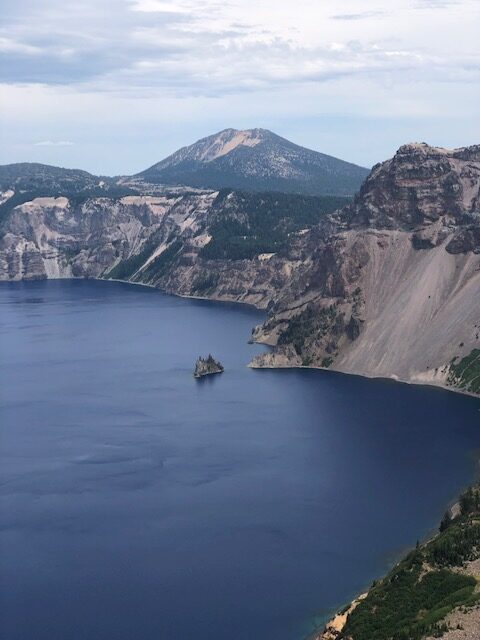
- Mount Scott – This is the park’s highest point (8,929 feet) and you can hike right up to the fire tower near the peak. This hike is 4.4 miles round trip and climbs 1250 feet. You start out in the forest and follow long switchbacks with gorgeous views out over the meadows and distant peaks. Once you reach the top, you can see the entire lake, with Mount Thielsen looming over Diamond Lake to the north and Union Peak to the southwest. You can also see the Klamath River and Klamath Lakes to the south. It’s a tough hike, but the views are worth it.
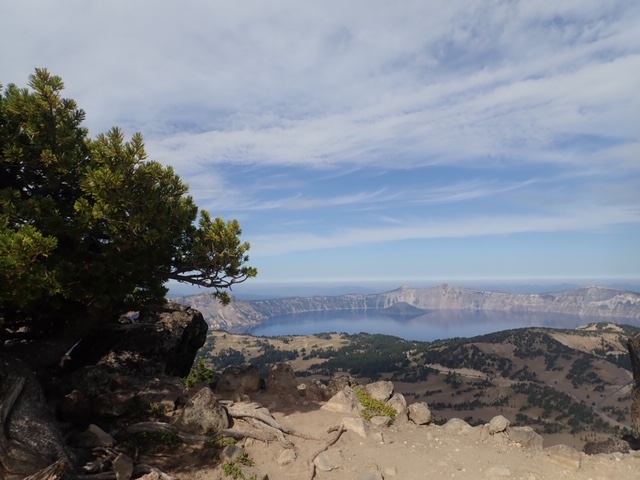
- Crater Peak – At 7,263 feet tall, hiking up to Crater Peak is not as difficult as the others, but it was perhaps our favorite hike. Most of it was a lovely stroll through the wood then a climb at the end up to the crater. Unlike other volcanic craters, this one was soft; full of grass and wildflowers with butterflies and dragonflies. The view was so clear, you could see Mount Shasta.
This hike does not give you any views of Crater Lake, so it tends to be less traveled and quieter than some of the more popular “view” trails. Maybe that is another reason we liked it so much.
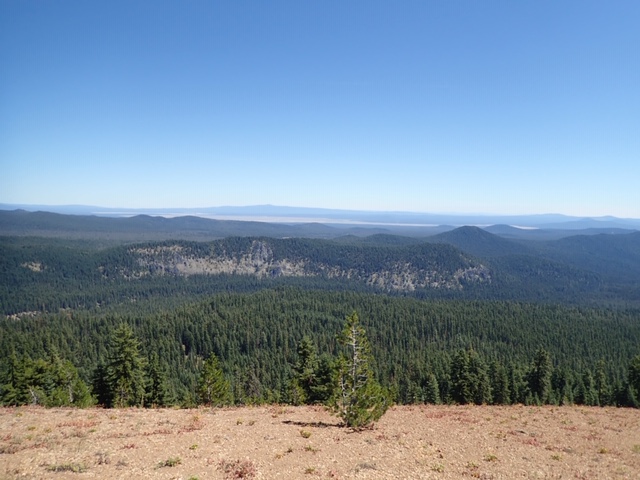
Crater Lake is beautiful, but if you can stay for a bit, you will find that the park has much more to offer than just the lake!
#FindYourPark
#SeeAmericaFirst
Need Help Planning Your Visits?
If you would like to explore this or other National Park Units, but need a bit help in the planning, please give us a call at (480) 609-3978. We are happy to offer customized trip planning.
